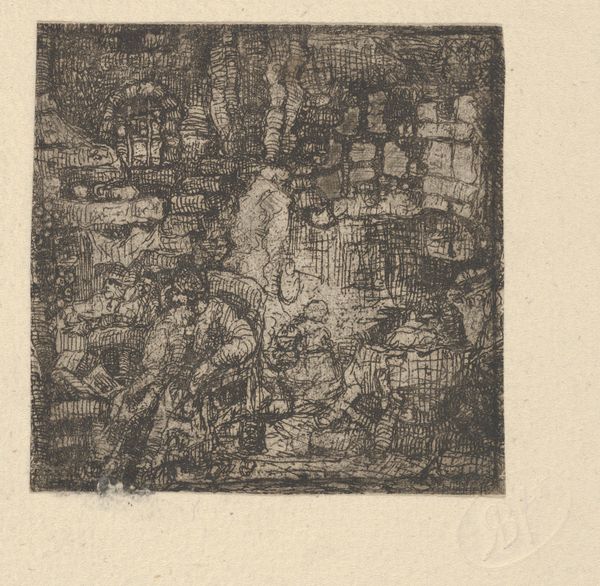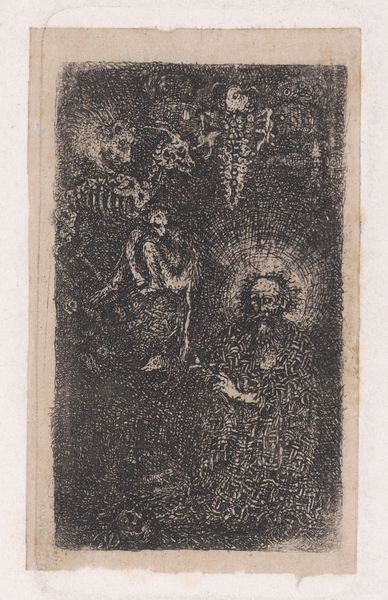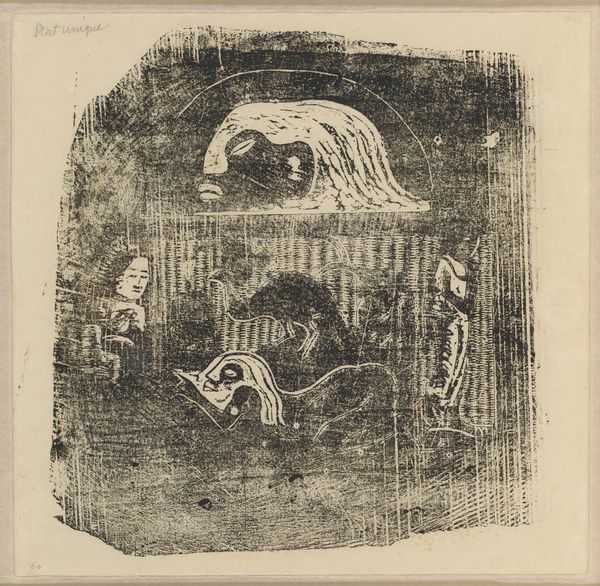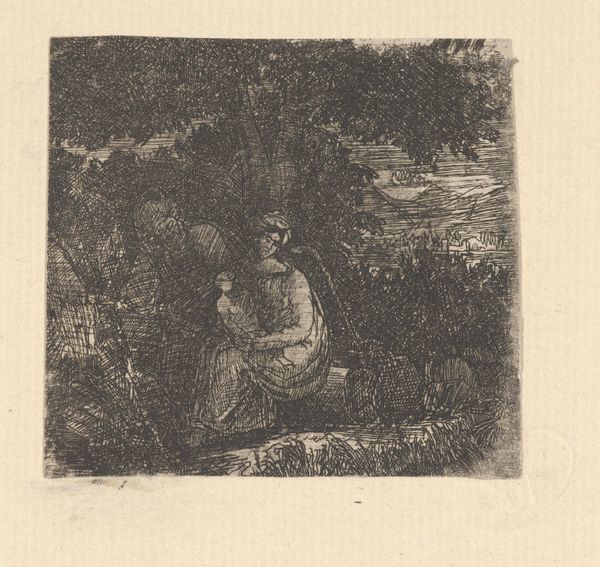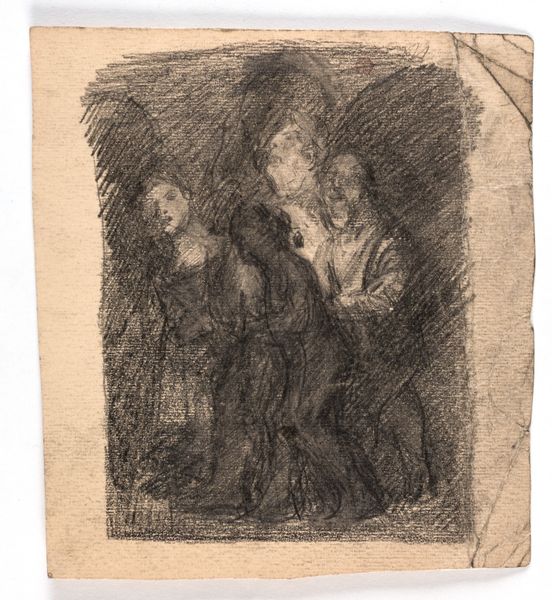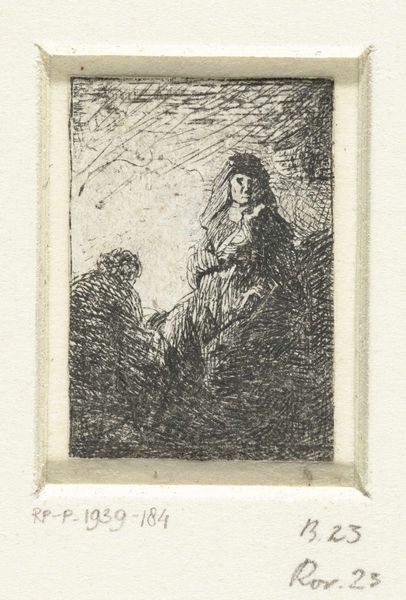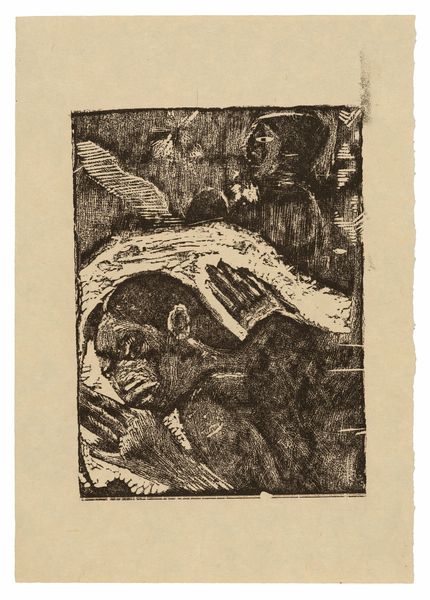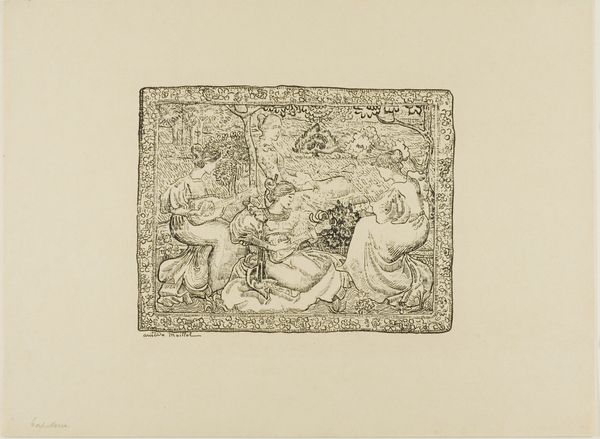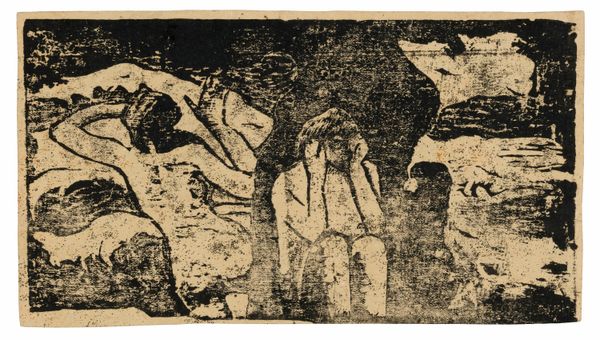
Dimensions: Sheet: 6 7/8 × 5 3/8 in. (17.4 × 13.6 cm) Plate: 1 15/16 × 1 3/4 in. (5 × 4.4 cm)
Copyright: Public Domain
Curator: Look at this etching! Rodolphe Bresdin, who worked roughly between 1839 and 1885, created this small print titled "La Sainte Famille," or "The Holy Family." It resides here at the Metropolitan Museum of Art. Editor: Immediately, I’m struck by how intimate it feels, yet also quite mysterious. There's a quietude but also a hint of the uncanny with the sheer density of detail. Curator: Yes, Bresdin was a master printmaker known for his minute detail and complex compositions. He fits well within the Romanticism movement of the 19th century. Editor: It's intriguing. The halo is clearly a signifier, linking the figure to religious iconography, imbuing the image with layers of meaning about purity and holiness within, possibly the conventional values assigned to family structures. But the deep etching and dark spaces surrounding the figures...they create almost a feeling of imprisonment. Curator: Well, religious depictions at the time often served both a devotional and didactic function. Prints like this were relatively inexpensive, allowing wider distribution of religious imagery, helping shape moral and spiritual life of its viewers. And the Bresdin print indeed follows tradition. Editor: But is it also about something else? Look at all of these images intertwined. Are there any pre-Christian iconographies woven through here? Do the trees also signify any aspect of the old, pagan faiths that Europe suppressed, suggesting tension, or change to old value systems? Curator: The image, overall, does present the Holy Family, within a defined time, but also engages with broader historical themes about families, roles, values, and expectations through religion in wider society. This piece does that! Editor: Precisely. That subtle rebellion, those other, less dominant systems… fascinating. You can see it within the lines themselves. Curator: In some ways, Bresdin seems to be examining and interpreting both the past and the present simultaneously within his work, prompting viewers to engage. Editor: So even in an artwork depicting what's essentially a cultural cornerstone like the Holy Family, we can see an examination of historical change, psychological layers, and the evolution of meaning through symbolism. Curator: Precisely! Editor: A powerful little etching, full of historical reverberations and symbol-systems layered with commentary.
Comments
No comments
Be the first to comment and join the conversation on the ultimate creative platform.

